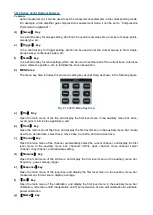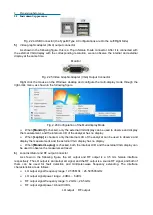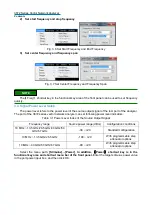
3
Typical Applications
3.1 Analyzer Preset
3 Typical Applications
● Analyzer Preset ........................................................................................................... 24
● Measurement Parameters Selection ........................................................................... 24
● Frequency Range Setup ............................................................................................. 26
● Signal Power Level Setup ........................................................................................... 27
● Sweep Setup ............................................................................................................... 28
● Data Format and Scale Setup ..................................................................................... 29
● Data Output ................................................................................................................. 30
3.1 Analyzer Preset
The analyzer can be reset to a known default status or a user-defined status. By default, when the
analyzer is reset to a default status, it can be reset to a user-defined status by settings. The specific
steps for setting the user reset status are as follows:
1) Select the menu path
[System]→[Define the User Status...]
, and the
Define the User Preset
Status
dialog will be displayed;
2) Click
[Enable User Preset Status]
check box;
Note: a)
If checking
[Save Last Status as User Preset Status]
, the last status before
exiting the program will be saved as the user reset status;
b)
After clicking
[Save Current Status as User Preset Status]
button, the analyzer
will save the current setting of the instrument as the user reset status;
c)
If an existing status shall be used, click
[Load Existing File as User Preset Status]
button and open the status file in
Open
dialog, and the analyzer will use the
selected file as the user reset status.
Fig. 3.1 Define the User Reset Status
3.2 Measurement Parameters Selection
3.2.1
S parameter
1) Overview of Sparameter
The S parameter (scattering parameter) is used to describe how a device changes the input signal,
which also describes the reflection and transmission characteristics of the DUT. The S parameter adopts
the agreed digital arrangement to express the ratio relationship (S
output input
) between two complex
vectors containing amplitude and phase information. The output refers to the output signal port number
of the DUTs, and the input refers to the input signal port number of the DUT. The analyzer has four test
ports and can measure single-port, dual-port, three-port and four-port devices.
For example, 4 S parameters can be measured simultaneously when a dual-port device is
connected to ports 1 and 2.











































